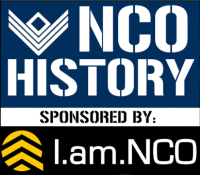When the Civil War broke out, 18-year-old William McKinley quit his job as a postal clerk in Poland, Ohio, and enlisted as a private in Company E, of the 23rd Ohio Volunteer Infantry. Before his first year of service had ended,McKinley was promoted to Commissary Sergeant. On September 17, 1862, at the Battle of Antietam, the bloodiest day of the Civil War, Sergeant McKinley was just to the rear of the battlefield watching over the brigade’s food and supplies. The men had eaten only a scanty breakfast, and he knew that as the day wore on the Buckeyes were growing weaker. Gathering up a hand full of stragglers, Sergeant McKinley courageously led two mule teams with wagons of rations and hot coffee into the thick of battle. Working his way over rough ground, through a hailstorm of artillery and rifle fire, he ignored repeated warnings to retreat – and continued on. He lost one team of mules to Confederate gunners, but did not return to the rear of the brigade until his fellow soldiers had been properly fed under the most adverse conditions. Sergeant McKinley Co. E. 23rd Ohio Vol. Infantry, while in charge of the Commissary Department, on the afternoon of the day of the battle of Antietam, September 17, 1862, personally and without orders served “hot coffee” and “warm food” to every man in the Regiment, on this spot and in doing so had to pass under fire. (monument)














